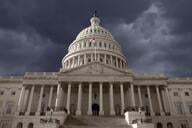You have /5 articles left.
Sign up for a free account or log in.
Over the last 30 years, universities have become increasingly aggressive about securing the rights to faculty intellectual property (IP) that is patentable and thus potentially profitable. The operative distinction in many current policies is between faculty IP that can be protected by copyright, versus IP that is patentable.
In a major new 100,000-word report issued this month -- Recommended Principles & Practices to Guide Academy-Industry Relationships -- the American Association of University Professors argues that this distinction is not grounded in any rational analysis of the nature of faculty research and productivity. It is essentially an opportunistic maneuver to gain administrative control over IP that may be income producing. We urge that the administrative distinction between ownership of copyrightable and patentable intellectual property be abandoned. Faculty members should have primary authority over the disposition of all their IP, subject to legal and contractual restrictions and subject to principles articulated by campus faculty collectively.
This recommended IP Principle does not, I should make clear, apply to IP that is contractually negotiated as an additional individual faculty responsibility separate from the teaching and research that are encompassed by a faculty member's general appointment conditions. Universities can negotiate with faculty members over optional tasks specifically identified as work for hire, in which case rights and ownership are subject to mutual agreement. Unfortunately many universities are now claiming ownership of faculty IP that is a product of ordinary and continuing research and scholarship.
Since 2007, that approach has had assistance from the National Association of College and University Attorneys (NACUA). That year Beth Cate (Indiana University), David Drooz (North Carolina State University), Pierre Hohenberg (New York University), and Kathy Schulz (New York University) presented a paper recommending IP policies at NACUA''s annual meeting.
A version of "Creating Intellectual Property Policies and Current Issues in Administering Online Courses" with numerous appendices is on the members' only section of NACUA’s web site. Perhaps unsurprisingly, the paper, which I have read, urges comprehensive university ownership of faculty IP whenever substantial use of university resources has been involved in its creation. (NACUA agreed to make this copy of the paperfor link -sj available, noting that while it reflected the authors' views at the time, some issues and some of their thinking may have changed since then.)
"Substantial resources," the paper argues, "might include specialized computer resources or other equipment and significant use of student or research support." A number of income-producing activities, including textbook authorship, could easily fall under that umbrella. The paper also stipulates that products of faculty consulting may not be transferable to third parties if "the faculty member is involved with university research in the same area as the consulting" or if the consulting implicated the faculty member’s teaching activities. The faculty right to make software they have created be freely available through open-source licensing is subject to review as to whether "the goals of the institution would be better served through commercialization."
In the AAUP’s view, we are now in the terrain of serious infringements on faculty academic freedom.
Interestingly enough, it was not always so. A look at the history of how IP has been handled at universities makes it clear that current policies in many cases diverge from foundational IP principles. Seattle-based IP authority Gerald Barnett recently posted a blog entry -- "Blasts from the Past" -- that highlights university IP policies from the mid-20th century. Some institutions at the time already sought comprehensive control over faculty IP. Stanford University had a patent review committee that could recommend the university president assert control over any "valuable invention."
The Massachusetts Institute of Technology's 1932 policy was firm: "Inventions or other developments, whether or not subject to patent, resulting directly from a program of research financed entirely by the Institute shall be the exclusive property of the Institute, and the Institute shall be entitled to all benefits and rights accruing from such inventions or developments and may acquire the title to any patents based thereon."
On the other hand, the University of California’s 1943 policy was unambiguous in asserting faculty rights to control their IP: "Assignment to the regents of whatever rights the inventor or discoverer may possess in the patent or appointment of the board as the agent of the inventor or discoverer shall be optional on the part of the faculty member or employee."
The 1945 University of Texas policy similarly asserted that "the title to a patent for any discovery or invention made by an employee of the University of Texas belongs to the said employee and he is free to develop or handle it in any manner he sees fit." The University of Arizona in 1939 also declared that "no inventor shall be compelled to submit an invention to the Patent Committee." Both institutions did mandate modest profit-sharing, Arizona specifying that 10 percent of income derived from a patent go to the university and Texas established a tiered schedule for profit-sharing. Texas’s top level — at which 20 percent of profits were due the institution -- came after net royalties exceeded $5,000, which equals about $60,00 in today’s dollars. These policies certainly count as enlightened in the current scene.
The more restrictive policies assume a model of faculty appointment that conceives of faculty as very much comparable to corporate employees, where everything you create belongs to the employer. Since its founding 1915 Declaration, of course, the AAUP has argued that faculty are not employees in that narrow and restrictive sense. They are appointed to exercise independent judgment and carry out independent research. In fact the NACUA guidelines implicitly recognize that faculty are different. They dismiss the IP rights of non-faculty employees with a wave of policy assertion: "The intellectual property created by employees (other than faculty), acting within the scope of their employment (whether as administrators or as participants in research), should be owned by the university under applicable law." The rest of the lengthy document amounts to an effort to make it possible to treat faculty in the same way.
The AAUP's new report lays out carefully why this impulse is fundamentally misguided. The effort to control faculty IP relies on an unsupportable logic: faculty research and scholarship is guided by academic freedom up to the point when a faculty member creates a profitable invention. At that point the university steps in and takes over. Academic freedom apparently does not cover how patentable research is produced and disseminated, even though faculty publications about their inventions remain under their own control and can be disseminated as faculty see fit. The AAUP argues instead that inventions are a product of faculty research and scholarship and properly encompassed by it. There is no fair and reasonable distinction between the research and creative thinking that produces a plan for an invention and the invention itself.
There is no reason to suppose, moreover, that either administrators or university technology transfer offices are better suited to decide how an invention should be shared, marketed, or distributed. Certainly they are not better positioned to understand the research or technology involved. That is not to say any of the potential parties to a patent negotiation — a faculty member, an industry sponsor, a university office, or a university management agent — is necessarily enlightened. Greed, ignorance, or self-deception can distort any stakeholder’s perception and negotiating strategy.
That is partly why the AAUP’s Principles create a clear role for collective faculty governance in setting IP policy. Greed or indifference might, for example, lead any party to a negotiation to dismiss the social utility of assuring that a lifesaving technology be commercialized in such a way as to guarantee its availability and affordability in the developing world. A contract with a company might allow it sit on such a technology and delay its manufacture indefinitely. These and other risks can be minimized if the faculty senate mandates principles to guide IP management.
We are not assuming a university faculty will want to embrace progressive policies for distributing lifesaving medicines or technologies in the developing world, though we do recommend that practice, but we certainly recommend that the senate have the authority to debate and enforce such a policy if it chooses. Similarly, a senate might establish time frames for commercialization and time limits for exclusive licensing. It is much more difficult for responsible administrators to include such conditions in research contracts with industry sponsors without firm campus-wide policies.
As the AAUP has argued since its founding, research policy falls within the area of faculty professional responsibility and expertise. We have issued our report to help reassert that authority for the benefit of the common good.




